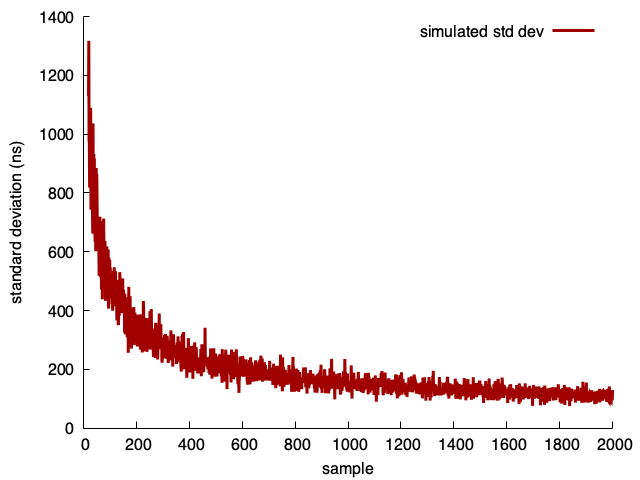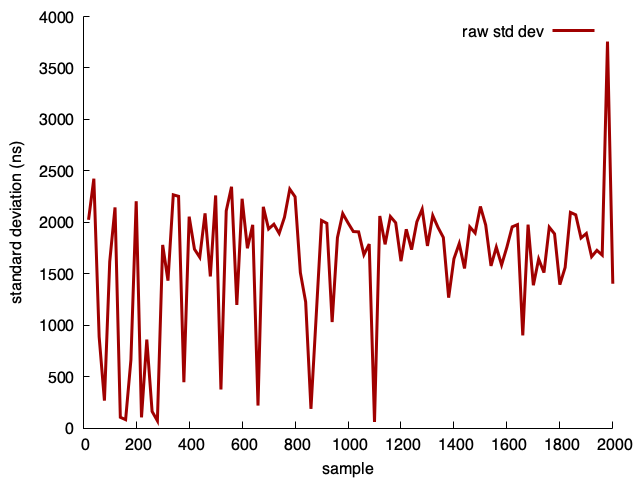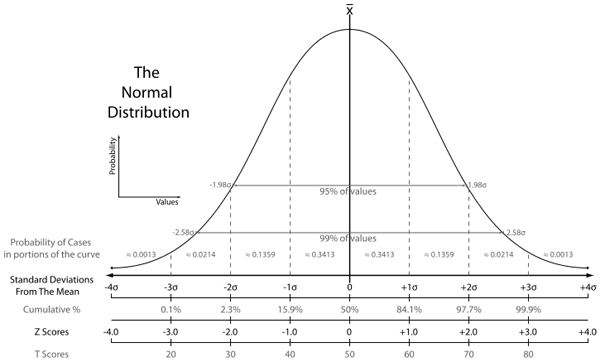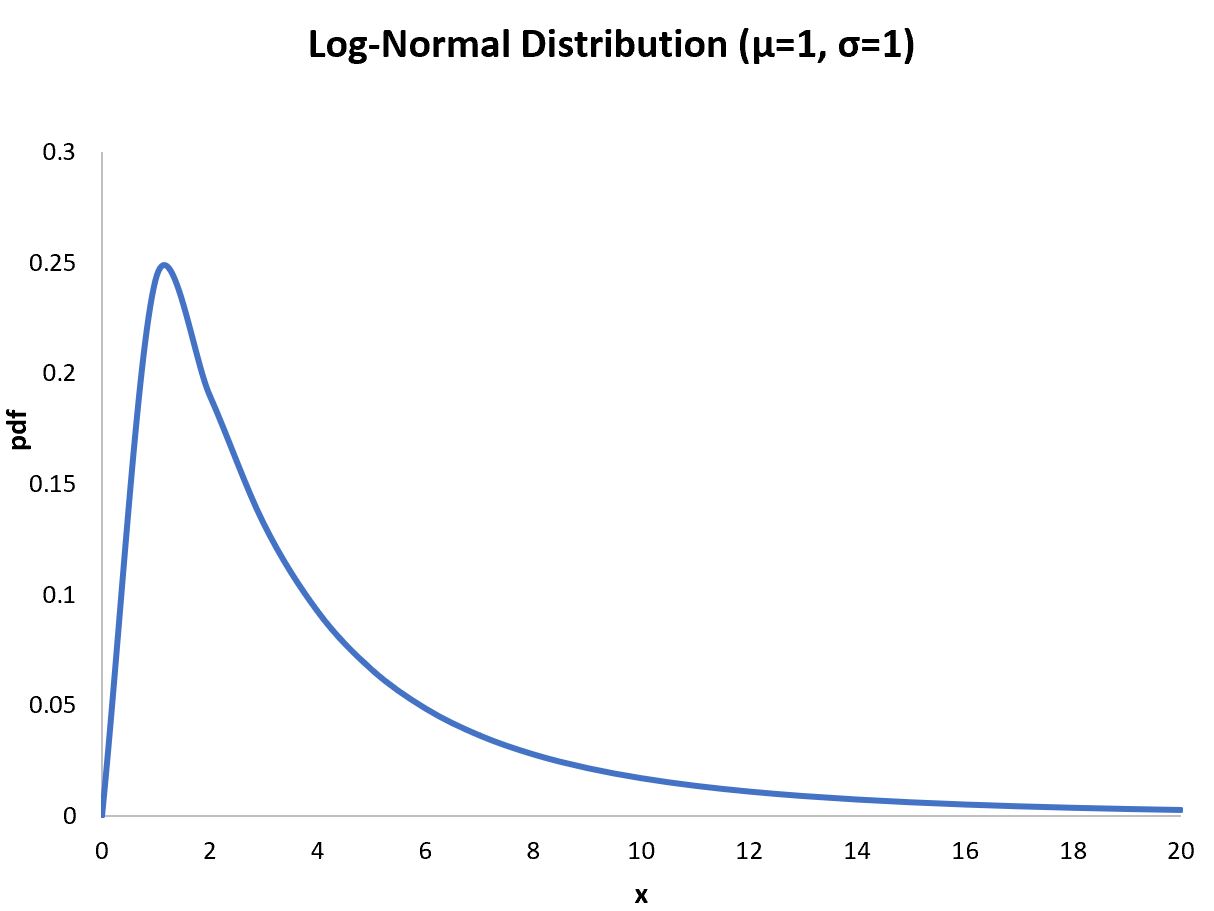Repeated measures increase accuracy
Measures are
Sum is
Average is
Simulation
mu, sigma = 10000, 5000
for N in range(20, 2000+1):
s = [sum(np.random.default_rng().normal(mu, sigma, N))/N for i in range(30)]
print(N,np.std(s))

Actual measurements
// returns the average
double transcode(const std::string& source, size_t iterations);
...
for(size_t i = iterations_start; i <= iterations_end; i+=step) {
std::vector<double> averages;
for(size_t j = 0; j < 30; j++) { averages.push_back(transcode(source, i)); }
std::cout << i << "\t" << compute_std_dev(averages) << std::endl;
}

Sigma events

- 1-sigma is 32%
- 2-sigma is 5%
- 3-sigma is 0.3% (once ever 300 trials)
- 4-sigma is 0.00669% (once every 15000 trials)
- 5-sigma is 5.9e-05% (once every 1,700,000 trials)
- 6-sigma is 2e-07% (once every 500,000,000)
Measuring sigma events
Take 300 measures after warmup, and measure the worst relative deviation
$ for i in {1..10}; do sudo ./sigma_test; done
4.56151
4.904
7.43446
5.73425
9.89544
12.975
3.92584
3.14633
4.91766
5.3699
What if we dealt with log-normal distributions?

for N in range(20, 2000+1):
s = [sum(np.random.default_rng().lognormal(1, 4, N))/N for i in range(30)]
print(N,np.std(s))

What if we measured the minimum?
Relative standard deviation (
| N | average | minimum |
|---|---|---|
| 200 | 3.44% | 1.38% |
| 2000 | 2.66% | 1.19% |
| 10000 | 2.95% | 1.27% |
- The minimum is easier to measure to 1% accuracy.
CPU performance counters
Processors have zero-overhead counters recording instruction retired, actual cycles, and so forth.
No need to freeze the CPU frequency: you can measure it.
Limitations
- You can only measure so many things (2, 4 metrics, not 25)
- Required privileged access (e.g., root)
Counters in the cloud
- x64: Requires at least a full CPU
- ARM Graviton: generally available but limited number (e.g., 2 counters)
Instruction counts are accurate

Using performance counters
- Java instruction counters: https://github.com/jvm-profiling-tools/async-profiler
- C/C++: instruction counters are available through the Linux kernel
- Go instruction counters
Generally, fewer instructions means faster code
- Some instructions are more expensive than others (e.g., division).
- Data dependency can make instruction counts less relevant.
- Branching can artificially lower instruction count.
If you are adding speculative branching, make sure your test input is large.
while (howmany != 0) {
val = random();
if( val is an odd integer ) {
out[index] = val;
index += 1;
}
howmany--;
}
2000 'random' elements, AMD Rome
| trial | mispredicted branches |
|---|---|
| 1 | 50% |
| 2 | 18% |
| 3 | 6% |
| 4 | 2% |
| 5 | 1% |
| 6 | 0.3% |
| 7 | 0.15% |
| 8 | 0.15% |
| 9 | 0.1% |
Take away 1
- Computational microbenchmarks can have log-normal distributions.
- Consider measuring the minimum instead of the average.
Take away 2
- Benchmarking often is good
- Long-running benchmarks are not necessarily more accurate.
- Prefer cheap, well-designed benchmarks.
Links
- Blog https://lemire.me/blog/
- Twitter: @lemire
- GitHub: https://github.com/lemire